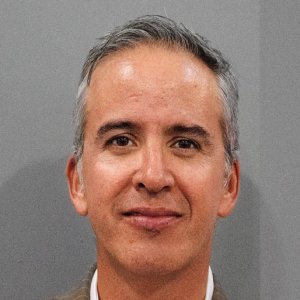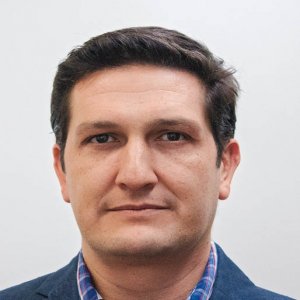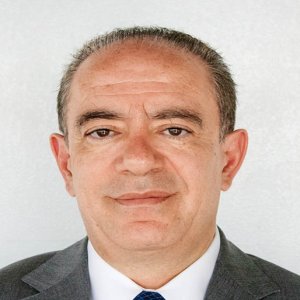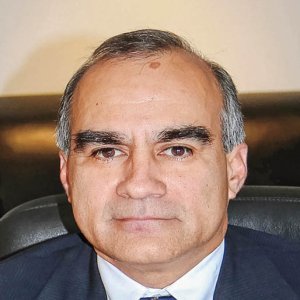Undersecretariat Prioritize Acceleration of Concessioning Process

STORY INLINE POST
Q: How do you assess the performance of SEDATU and the Mining Committees regarding the allocation of the funds from the Mining Trust Fund?
A: The Regional Committees for the Development of Mining Zones are the bodies that are responsible for defining the application of resources, seeking to benefit mining locations and regions where mining takes place according to Article 275 of the Federal Law of Rights.
Each Regional Development Committee is composed of a representative of the Federal Public Administration. In this case, it is the head of SEDATU, a representative of the state government and a representative of the municipality or municipalities where mining activities are located. In cases where they are carried out in indigenous or agrarian communities, a representative of these communities, as well as a representative of the relevant mining companies with activities in the municipality round out the committee.
The fund’s resources during 2015 amounted to around US$131.2 million. The committees that were installed in the same year have already worked on the identification of community projects to which the funds will be allocated, including the construction and refurbishment of schools, road infrastructure, public lighting, water treatment, waste landfills, urban mobility initiatives and the protection of natural areas. The projects approved represent US$93.7 million, according to SEDATU.
Between 2015 and 2017, the fiscal authorities raised more than US$508 million through the special, additional and extraordinary rights, of which about US$408 million are being allocated to the Fund for the Sustainable Regional Development of States and Mining Municipalities.
The Mining Fund’s investments have contributed to improving the image of mining both among the communities where it is carried out and between local governments, which have identified a lower incidence of conflicts.
Q: What role can mining clusters like the one formed in Guerrero play in bringing more talent and capital to the sector in the long term?
A: Promotion of clusters is a key component within the Ministry of Economy’s National Development Plan and innovative Mining Development Program 2013-2018. This program seeks to strengthen and enhance the capacity of the mining sector to contribute to national development. The formation of mining clusters is one way to accomplish this goal.
Mexico has five mining clusters: in the states of Zacatecas, created in 2012; Chihuahua, created in 2013; Coahuila and Sonora created in 2014 and the most recent was created in the state of Guerrero in 2016.
One of the fundamental characteristics of these clusters is the inclusion of educational and research institutions as part of their structure. This allows the generation of collaborative activities in the training and integration of human resources in relation to the specific requirements of the industry in the regions where the cluster operates, as well as in the development of research and technological solutions to improve operations and processes. This is how clusters develop and attract human talent to the activities of the mining sector.
The integration of local and regional suppliers in the cluster is fundamental because this allows greater efficiency in the costs of inputs and services provided by these companies, as well as savings in transportation. This creates synergies that stimulate the productivity and competitiveness of the members of the cluster, improving the business environment and the conditions for the profitability of investments. In this way clusters stimulate the flow of capital to the sector.
Q: What is being done to rectify the issues and delays faced by the concession system in Mexico?
A: In accordance with one of the primary objectives of the Mining Development Program, we are implementing technological tools to reduce costs, streamline service procedures and provide a more efficient service to users. We have clearly identified the areas of opportunity that we can develop with technological infrastructure to have better control. We are working on modernizing our technological platform and digitalizing all the concession process and cartography, meaning we will be able to reduce the number of days taken to issue a concession title. This Digital Government Integrated Platform will also allow us to accelerate procedures through faster digital reception of requests. The training and strengthening of our staff will also play an important role in this transition.
Q: What are the main goals and objectives for the Undersecretariat of Mining in 2017 and beyond?
A: The federal government, through the Ministry of Economy, is committed to supporting the growth and expansion of mining activity, even more so in a complicated and more competitive international context. This will be carried out through specific public policies that address the greater needs of the industry to consolidate its strategic importance. Public policies for the promotion of mining recognize the current conditions of mining operations and our strategies guide the work of federal government bodies to strengthen the sector as a catalyst for development.
These policies are reflected in the Mining Development Program 2013-2018, which includes public policies that are already applied as well as the goals and work agenda of the current administration. We want to help the sector meet the challenges of the current situation and consolidate its
contribution to the economic and social development of the country, its regions and localities.
The Mining Development Program 2013-2018 defines four main objectives: to promote greater levels of investment and competitiveness in the mining sector, to seek increased funding in the mining sector and its value chain, to promote the development of small and medium-sized mining and social mining and to modernize the institutional regulations for the sector and improve processes for dealing with mining concessions.
We will continue working to achieve the goals we set for 2017 and 2018 and encourage the re-engineering of the Undersecretariat of Mining to be able to meet the expansion and development needs of the sector.
We have four immediate priorities. Firstly, the development of 1:50,000 cartography will continue since it is fundamental to encouraging investment that favors the development of projects and sources of employment. Secondly, we will support and promote the technological and process improvement to favor the productivity of the sector and its competitiveness. Thirdly, we will work toward allowing the immediate deductibility of pre-operating expenses. And finally, we will continue with the systematization of the procedures under the remit of the Undersecretariat of Mining through the Directorate General of Mines.























